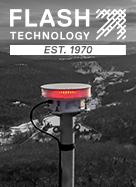
Although the report identified that the continued expansion and deployment of critical technologies directly contributed to creating more than 368,750 high-quality American jobs, it does not provide a breakdown of those workers’ professions. Tower technicians represent about 10% of the total positions.
For the third year, the Wireless Infrastructure Association’s (WIA) Wireless Infrastructure by the Numbers Report provides a comprehensive analysis of the U.S. wireless infrastructure sector, covering purpose-built cellular towers, indoor and outdoor small cells, macrocell sites, annual infrastructure investments, and the American workforce sustaining this essential industry.
Wireless infrastructure consists of various components, including towers, cell sites, antennas, radios, fiber networks, and data centers, which support cellular networks, Fixed Wireless Access (FWA), and in-building wireless solutions. These networks operate across a broad spectrum, including millimeter-Wave (mmWave), Citizens Broadband Radio Service (CBRS), C-band, and other cellular frequencies.
In 2024, the U.S. cellular industry invested over $10.8 billion in expanding network capacity and coverage, excluding spectrum, maintenance, and ongoing operations expenditures. Operating expenses for U.S. cellular networks reached nearly $53 billion in 2024. Wireless infrastructure investments—including construction, maintenance, and operations—amounted to more than $63 billion.
By the end of 2024, just over 651,000 structures supported wireless infrastructure across the United States. This includes dedicated cellular towers, broadcast TV and radio towers, water towers, rooftops, church steeples, billboards, utility poles, farm silos, and other buildings. While some of these sites accommodate macrocells and small cells, many are not in optimal locations or capable of supporting the macrocellular equipment used by today’s network operators. Others serve distinct functions, such as broadcasting TV, radio, or managing air traffic control.
The following key statistics show the strength of the U.S. wireless infrastructure industry at the end of 2024:
- 154,800 purpose-built cellular towers were in operation;
- 248,050 macrocell sites, not including small cells, were in operation;
- 197,850 outdoor small cells were in operation;
- And 802,500 indoor small cell nodes were in use, including DAS, small cells, private CBRS networks, mmWave, and other licensed frequency bands.
The deployment and operation of wireless infrastructure drive significant employment across the United States. In 2024, an estimated 368,750 full-time workers or equivalents were engaged in building, maintaining, and operating the nation’s cellular networks, supporting 5G (and older 4G LTE), indoor and outdoor coverage, and private network deployments.
Additional notable trends in the industry for 2024 include:
- More towers and cell sites are being deployed, but more efficiently
- More macrocells are being deployed than new towers
- The number of new indoor small cells increased
- The number of outdoor small cells declined slightly
- The amount spent on maintaining and operating cellular networks increased, but build spending dropped

















